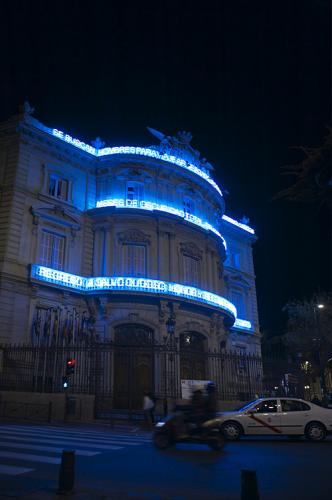
Foto, Alfonso Herranz.
The project Gran Sur uses the advertisement of the Imperial Trans-Antarctic Expedition led by Ernest Shackleton in 1914. The advertisement was published in a newspaper of that period with the aim of recruiting men to embark on the expedition to Antarctica. According to the legend, with time, the advertisement became famous.
"Men wanted for hazardous journey. Small wages, bitter cold, long months of complete darkness, constant danger, safe return doubtful. Honour and recognition in case of success"
The aim of the expedition was to cross the Antarctic continent via the South Pole. However, the expedition ship Endurance was beset and hit by pack ice before the crew was even able to disembark. All the members of the expedition managed to survive after an epic ordeal on Elephant Island. Shackleton and five other men crossed the Antarctic Ocean to South Georgia in an open boat called James Caird to sound the alarm at the Grytviken whaling station. After several rescue attempts, all the men on Elephant Island were finally rescued on the small Chilean boat Yelcho captained by Luis Pardo Villalón from Punta Arenas.
Shackleton did not lose a single man during the three-year length of the expedition. Shackleton's adventure is possibly the most outstanding of all expeditions to the Poles, and although it failed to offer any material benefit or scientific finding, the personal experience of the protagonists and the survival of the participants are in themselves an enormous triumph, the victory of man against the elements founded on two fundamental principles, solidarity and a fighting spirit.
This advertisement is the driving force and central motivation of the installation. It is comparable with an artistic manifesto or thought. It is a synthesis through the written word that narrates the work. The drawing that traces and synthesises a story.
The compiled documents of the expedition, photographs, films and travel logbooks, reveal an experiential survival journey. The essence of artistic creation also involves an unexplored journey and directs the senses towards objectives that help us understand our own perception of the world around us. Our own limits highlight the borders that we must cross.
Sir Ernest Shackleton's decision to embark on the journey is similar to any artistic idea whose end is to discover and reveal the unprecedented. He had an idea which no one else believed in.
The installation exhibits hidden images behind each illuminated word: a story, a time, a continent; in short, a rereading after 93 years of its first and only appearance in the press.
How many brief stories could be published in the form of an advertisement about the millions of Latin American immigrants who have also travelled and will eternally continue to cross the Atlantic with the aim of fulfilling a dream? We no longer have to look to the South Pole as the destination. The new region is the world. "The great strength of Ernest Shackleton as Explorer resides in that, in the Gran Sur, all mundane worries completely disappear".
Fernando Prats
Barcelona, 2007

The work of Fernando Prats is a literary ‘objet-trouvé', recovered and reedited to transform the façade of a building into a discursive support. To begin with, an institution is clearly a sedentary discourse that engraves in the public imagery what one can expect from the use of the words ‘casa' and ‘américa'. The institution is covered by a text that comes from another culture, which operates as a collective expression of desire aimed at mobilising multitudes.
The 28 exhibited words represent the terms of a migratory manifesto that authorises forms of notional movement between different areas of the social consciousness. Expressed, conceived to exist in their spaces of origin, these 28 words are deported to intervene in spaces that they were not conceived for, producing effects of meaning that will change the ways of reproducing their existence.
‘La Casa de America' is transformed into the referential ‘house of art', from where, in a parodical way, it is possible to define the ‘away from home' spaces where an artistic energy that seeks to remove itself from the social control models of vulnerable populations is invested. The bright body of the letters condenses the ominous burden of their own shadows.
Justo Pastor Mellado
Art critic, Santiago de Chile


